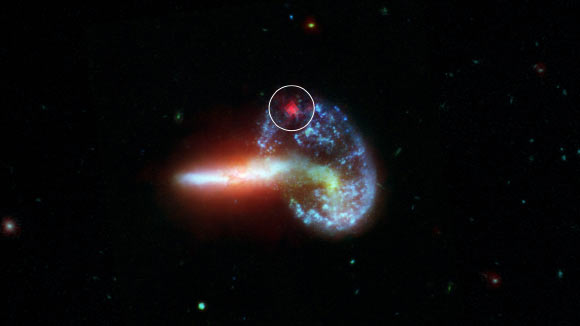Astronomers using data from NASA’s Spitzer Space Telescope have looked for dust-extinguished supernovae in the nuclear regions of 40 luminous and ultra-luminous infrared galaxies within 200 Mpc (652 million light-years).
Source: Sci News
“Our results with Spitzer show that the optical surveys we’ve long relied on for detecting supernovae miss up to half of the stellar explosions happening out there in the Universe,” said Dr. Ori Fox, an astronomer at the Space Telescope Science Institute.
“It’s very good news that the number of supernovae we’re seeing with Spitzer is statistically consistent with theoretical predictions.”
For the study, Dr. Fox and colleagues selected a local set of 40 dust-choked galaxies, known as luminous and ultra-luminous infrared galaxies (LIRGs and ULIRGs, respectively).
The dust in LIRGs and ULIRGs absorbs optical light from objects like supernovae but allows infrared light from these same objects to pass through unobstructed for telescopes like Spitzer to detect.
The astronomers detected nine supernovae, five of which were not discovered by optical surveys.
“It’s a testament to Spitzer’s discovery potential that the telescope was able to pick up the signal of hidden supernovae from these dusty galaxies,” Dr. Fox said.
The types of supernovae detected by the team are known as core-collapse supernovae, involving giant stars with at least eight times the mass of the Sun.
As they grow old and their cores fill with iron, the big stars can no longer produce enough energy to withstand their own gravity, and their cores collapse, suddenly and catastrophically.
The intense pressures and temperatures produced during the rapid cave-in forms new chemical elements via nuclear fusion.
The collapsing stars ultimately rebound off their ultra-dense cores, blowing themselves to smithereens and scattering those elements throughout space.
“If you have a handle on how many stars are forming, then you can predict how many stars will explode,” Dr. Fox said.
“Or, vice versa, if you have a handle on how many stars are exploding, you can predict how many stars are forming. Understanding that relationship is critical for many areas of study in astrophysics.”
The results were published in the Monthly Notices of the Royal Astronomical Society.
Source: Sci News

































Leave a Comment
You must be logged in to post a comment.